Pipe Organ Origins
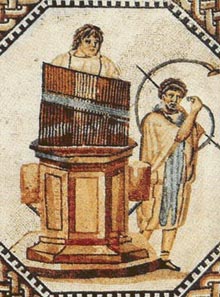
The origin of the pipe organ goes back to ancient Greece (in a primitive form called the ‘hydraulis’), but pipe organs really started to come into their own in the Middle Ages. For the 17th and 18th centuries they were the most complex device built by humanity (finally supplanted by telephone exchanges).
Pipe organs served the very practical purpose of being the only instrument loud enough to be heard in a large room like a church. (The alternative was orchestras, which have all sorts of logistical challenges.) Amplification wasn’t invented until the early 20th century, and the first practical electronic organ (the Hammond) didn’t appear until the 1930s.
So for a large sweep of church history, the pipe organ was the only practical way to lead congregational singing.
We have a 33-rank pipe organ built by Abbott & Sieker with the following stop list:
Great8′ Principal |
Swell8′ Gedeckt |
Choir8′ Gemshorn |
Pedal16′ Violone |
Use in Worship
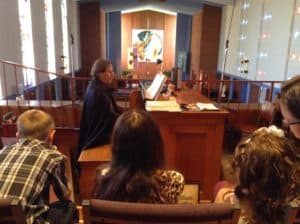
Our pipe organ is an integral part of a worship experience led and shared by members of all ages. Worship includes reading, drama, preaching, prayer, the Lord’s Supper, silence, and sharing a wide variety of music.
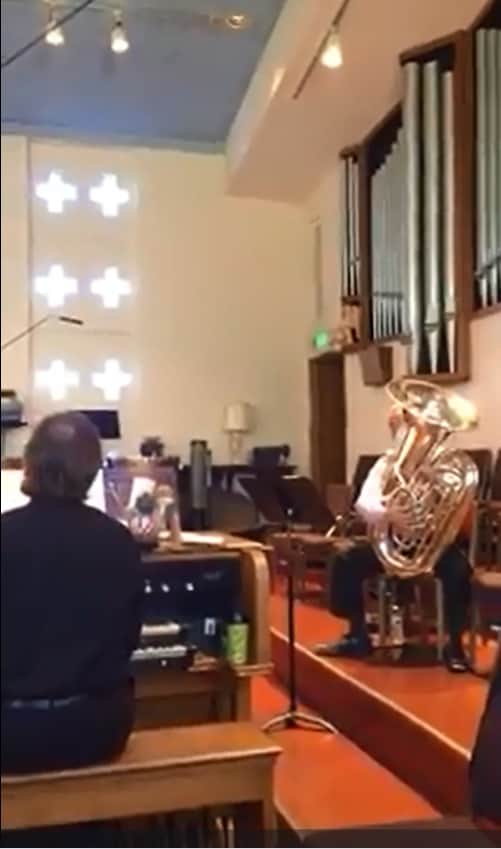
Worship is enlivened musically with a variety of instruments – hand bells, flute, brass, bag pipes, recorder, guitar, piano, harpsichord, percussion – and styles – classical, choral anthems, traditional hymns, Taize, contemporary songs, and original compositions. Our Music Director Curtiss Allen, and our Organist William Zeitler bring together the gifts of congregational and guest musicians to praise God, to make us aware of God’s love and presence, and to help us renew our commitment to serve our neighbor in Jesus’ name.
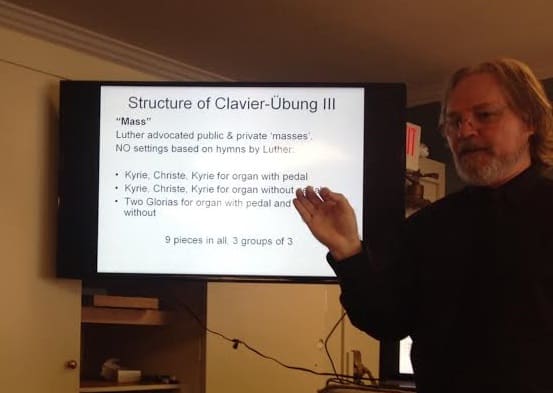
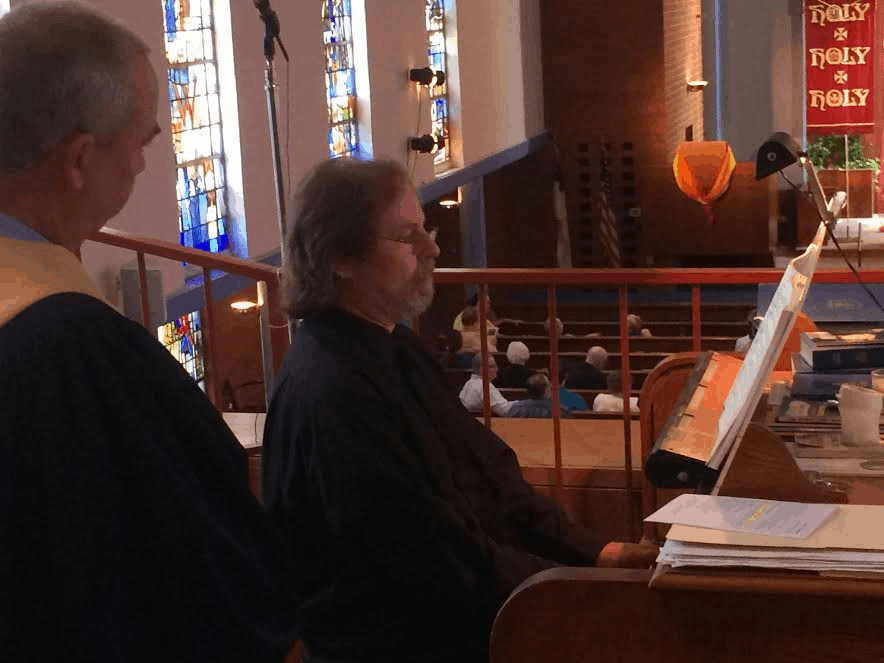
History of this Pipe Organ
Jim Huffstutler, former pastor (now retired) at San Bernardino First Presbyterian, recollects the history of the organ:
There were two church structures downtown, at Church and E (where the Savings and Loan is now). The first must have been built around 1890; it was moved back on the property and the new church was built on E Street. I assume this was the building that housed the original Estey organ (plus the beloved stained glass windows, the last of which is Christ in the Temple over the front door of present structure.)
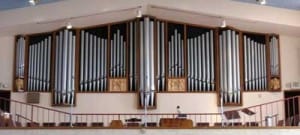 In 1952, congregation moved to 1900 D Street and brought along the organ. The original structure had divided chambers, right and left, with about 8 pews between them. A walkway and low wall sectioned off the choir. We were given a gift of $40,000 which had to be spent on “one thing” in the sanctuary, so the organ seemed a good bet. Prior to this, I got the idea that we could expand the organ, rank by rank, without a huge expenditure; so the Pipe Club was born. The original organ had 22 stops. We got it up to capacity with about 30 stops. With the gift we had two choices as we rebuilt the balcony, removed the upper seating, and turned the chambers to face the congregation: (1) We could rebuilt the loft and put in the pipes which show and add four ranks, bringing total to 36; or (2) we could invest in a new console for $40,000 which would have three manuals and thus control the (now three) chambers, but not add pipes. Thus we would have more control, but no change in sound. We decided to keep the old console and get more variety of sound.
In 1952, congregation moved to 1900 D Street and brought along the organ. The original structure had divided chambers, right and left, with about 8 pews between them. A walkway and low wall sectioned off the choir. We were given a gift of $40,000 which had to be spent on “one thing” in the sanctuary, so the organ seemed a good bet. Prior to this, I got the idea that we could expand the organ, rank by rank, without a huge expenditure; so the Pipe Club was born. The original organ had 22 stops. We got it up to capacity with about 30 stops. With the gift we had two choices as we rebuilt the balcony, removed the upper seating, and turned the chambers to face the congregation: (1) We could rebuilt the loft and put in the pipes which show and add four ranks, bringing total to 36; or (2) we could invest in a new console for $40,000 which would have three manuals and thus control the (now three) chambers, but not add pipes. Thus we would have more control, but no change in sound. We decided to keep the old console and get more variety of sound.
The carvings were done later to the theme, “Sing, Choirs of Angels.” If you notice the frieze carefully, each of the angels is a different race — the carvers suggestion. I’ve forgotten his name. He originally did clay models, then took about 6 months to carve the friezes and two figures. I think we paid him only $4000 in memorial funds. I asked his wife if he hated to give up his work after he had worked on it so long. So said, “No, not if it goes in a public place where they can be seen as often as they like. It’s different in a home.”

 i
i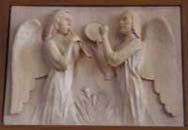
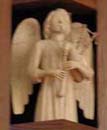
When I got there in 1963, the choir director had bought a bunch of “junk pipes,” hoping to enlarge the organ. Abott & Sieker [organ builders] said they weren’t any good, so we auctioned them off at a church dinner to raise money for the pipe club.
More Music
For more information about the history and background of the music selected for worship, additional music including original compositions for pipe organ, piano, and an unusual instrument known as a glass armonica, you may enjoy the “Music Box” William writes for First Presbyterian bulletins or want to see what is coming as far as preludes from William Zeitler’s web page.
